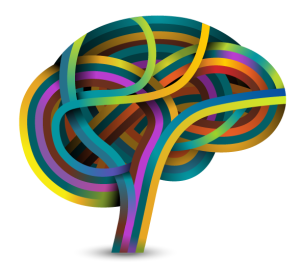 The latest and greatest buzzword around education in recent years is the concept of brain-based learning strategies. Many teachers believe, “I give knowledge…what else would I be teaching if not the brain?” A little background information may clear up any misconceptions about this learning pattern and how we can impart it in our classrooms for the betterment of our students.
The latest and greatest buzzword around education in recent years is the concept of brain-based learning strategies. Many teachers believe, “I give knowledge…what else would I be teaching if not the brain?” A little background information may clear up any misconceptions about this learning pattern and how we can impart it in our classrooms for the betterment of our students.
Brain-based learning combines the science of neuroscience with the art of teaching. Also known as educational neurobiology, brain-based learning theories and practices have gained greater attention in the past several years, especially in the wake of problem-based learning strategies. We all know that the brain is the center of thought and what allows a human being to function consciously and unconsciously. The brain also has an immense capacity to learn throughout an individual’s lifetime if given the opportunity.
Studies have found, for example, that individuals who solve logic puzzles, word puzzles, crossword puzzles and such can delay the onset of Alzheimer’s disease… a classic case of “if you don’t use it, you’ll lose it.” We are also aware that younger children have an immense capacity to learn, also referred to as neural plasticity. This term recognizes that the brain can absorb information quickly, however this can degrade as we become older. Language, for example, is very complex. It can be difficult for adults to learn a foreign language because their neural plasticity has declined. Children, however, can pick up on complex grammatical structures, vocabulary and other nuances of language at a young age. This is one of the reasons why many schools are choosing to teach foreign languages very early in school in an effort to take advantage of this neural plasticity.
When brain-based learning is discussed in regards to pedagogical methodologies, we are encouraging educators to use techniques that call upon the innate curiosity of human beings and incorporate a plethora of sensory motivators in order to drive learning. The strategy of problem-based learning, consequently, is to engage student curiosity in order to solve an applicable problem. Students want to take control of their own learning; the more they own it and make it their own, the more likely it is to be retained. Problem-based learning and brain-based learning helps remove the teacher from a primarily lecture-based role into one in which they act as a facilitator who gives the students the tools, resources, and guidance in order to help them draw their own conclusions. This engages students in high orders of thinking according to Bloom’s Taxonomy and also allows them to take on roles with which they feel comfortable.
It is especially important to engage the student’s senses in non-threatening ways and to create classroom environments that are non-threatening of mistakes. Instead, a brain-based classroom encourages constructive mistakes: the kinds of mistakes that allow us to learn. It was Thomas Edison who said that he had not failed at making a light bulb; he had only succeeded in finding ways that did not work. Students should feel free to make constructive mistakes that allow them to understand why one solution cannot work. Fostering a classroom environment of mutual respect and curiosity between students and teachers can do this. While it can be daunting to allow students to “take control” of the classroom and relinquish our iron-grip on the classroom, believe me when I say that the rewards far outweigh the risks. You will find yourself creating new relationships with your students based on mutual love of learning and curiosity, the sort of relationship that makes your students want to return to your room again and again to see what they will learn next.
Brain-based learning and problem-based learning can and do go hand-in-hand as teaching strategies, and you do not need to be a neuroscientist in order to successfully implement them in your classroom. David A. Sousa has written several books about brain-based learning strategies and is considered one of the foremost researchers on the subject, so that would be a good place to start in terms of books for reading. Several conferences also sponsor brain-based learning strategies, one of which is the Learning and the Brain symposiums that take place across the country for one day professional development sessions to multi-day summer institutes. I had the pleasure of attending one this month given in New York City at the renowned Columbia University and it was one of the greatest professional development experiences of my teaching career. Take a moment and look at their website to see if there is a conference or institute that would interest you.
Every teacher and administrator—regardless of their role with students—can and will benefit from learning new methods to reach their students and encourage their minds to develop and own the lessons we teach. After all, you’re already going in with the most important tool needed: your incredible, learning brain.






Leave a comment